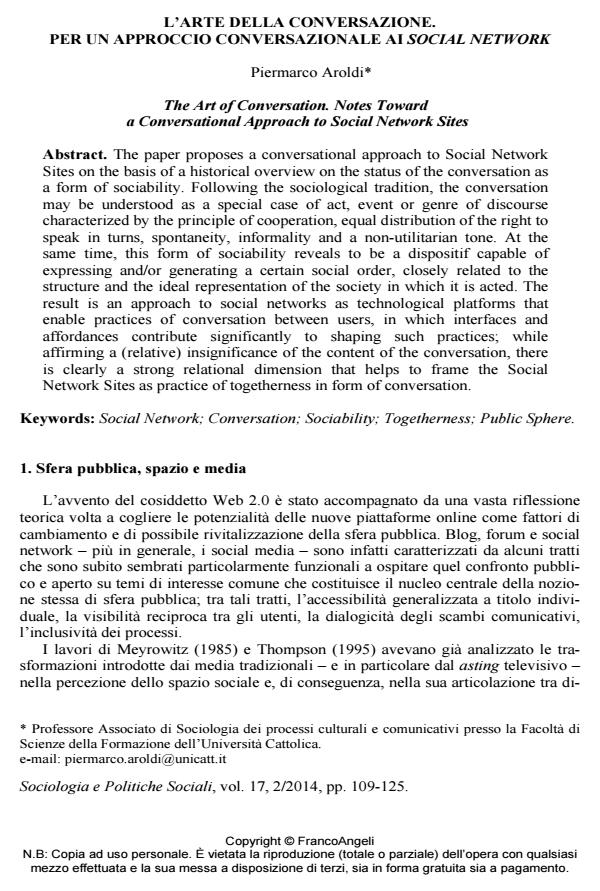The Art of Conversation. Notes Toward a Conversational Approach to Social Network Sites
Journal title SOCIOLOGIA E POLITICHE SOCIALI
Author/s Piermarco Aroldi
Publishing Year 2014 Issue 2014/2
Language Italian Pages 17 P. 109-125 File size 111 KB
DOI 10.3280/SP2014-002007
DOI is like a bar code for intellectual property: to have more infomation
click here
Below, you can see the article first page
If you want to buy this article in PDF format, you can do it, following the instructions to buy download credits

FrancoAngeli is member of Publishers International Linking Association, Inc (PILA), a not-for-profit association which run the CrossRef service enabling links to and from online scholarly content.
The paper proposes a conversational approach to Social Network Sites on the basis of a historical overview on the status of the conversation as a form of sociability. Following the sociological tradition, the conversation may be understood as a special case of act, event or genre of discourse characterized by the principle of cooperation, equal distribution of the right to speak in turns, spontaneity, informality and a non-utilitarian tone. At the same time, this form of sociability reveals to be a dispositif capable of expressing and/or generating a certain social order, closely related to the structure and the ideal representation of the society in which it is acted. The result is an approach to social networks as technological platforms that enable practices of conversation between users, in which interfaces and affordances contribute significantly to shaping such practices; while affirming a (relative) insignificance of the content of the conversation, there is clearly a strong relational dimension that helps to frame the Social Network Sites as practice of togetherness in form of conversation.
Keywords: Social Network; Conversation; Sociability; Togetherness; Public Sphere.
Piermarco Aroldi, L’arte della conversazione. per un approccio conversazionale ai social network in "SOCIOLOGIA E POLITICHE SOCIALI" 2/2014, pp 109-125, DOI: 10.3280/SP2014-002007